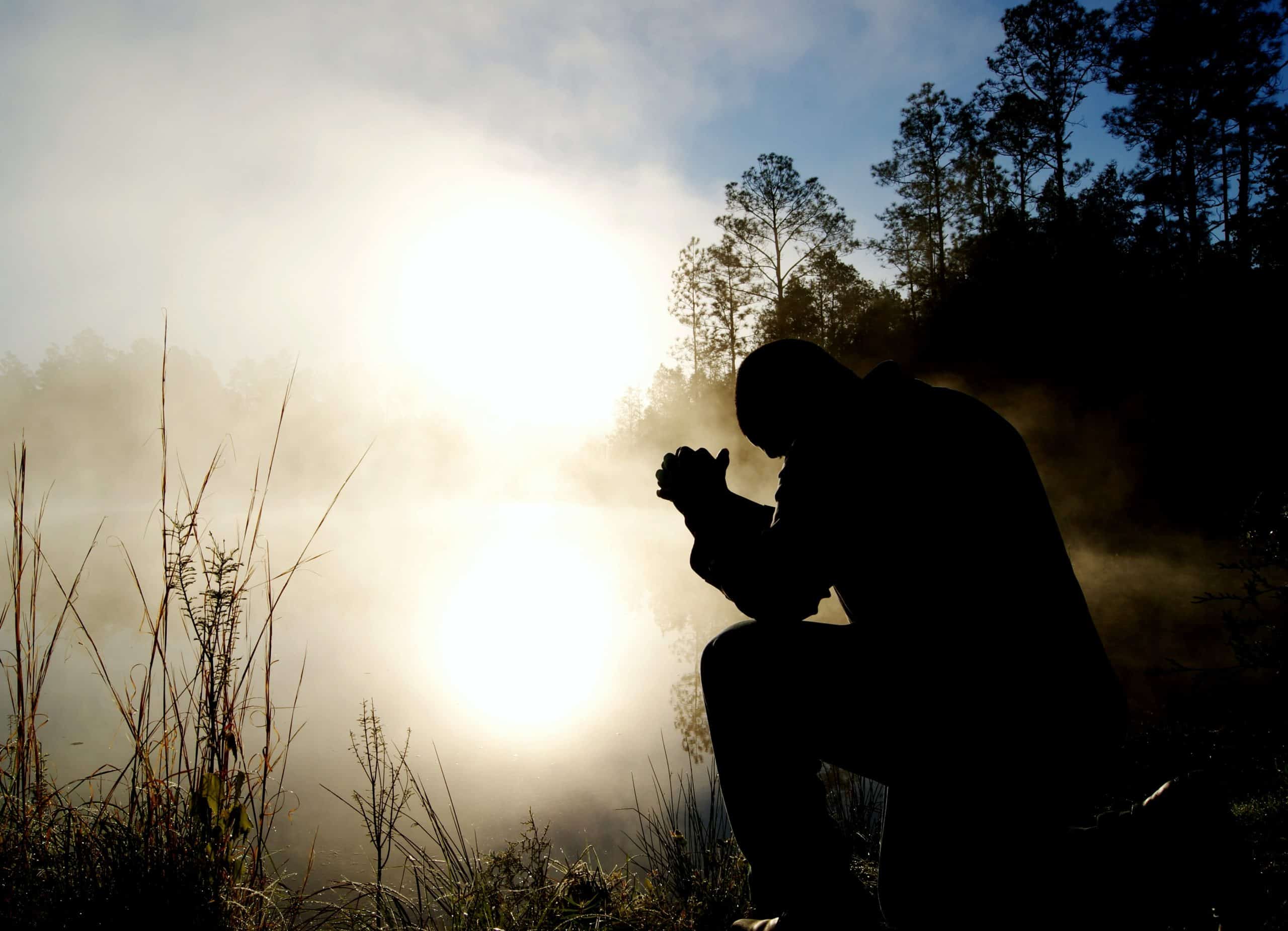In the special 8 days following Easter, known as the Octave, we get one gospel reading after another about the resurrection. It’s easy to grow accustomed to these readings if you’ve heard them year after year, but they really are quite varied, incredible, and sometimes perplexing. I’ve grown to love these stories because they remind me just how mysterious- in the religious sense- our Christian faith and our existence is.
It so happens that within the Octave this year our society also sets aside a special day to celebrate our planet: Earth Day. There has been an increasing focus on the ways we have abused and mistreated the Earth, and for good reason. Although the research has been around for a long time, and we have literal libraries full of textbooks and peer reviewed journals about the effect humans have had on the Earth, the mistreatment continues.
Two of the most famous resurrection stories offer us a way to explore how we might be called to a new way of seeing the Earth, and to better remember where we are in midst of the great story unfolding on this planet.
Mary Magdalene and a New Way of Seeing
This first resurrection story features Mary Magdalene. She has stayed outside the tomb alone weeping because she truly loved the Lord. The unjust abuse and murder her beloved faced is almost unfathomable. In the midst of grief, Mary encounters a man she thinks is the gardener, only to find out he is the very person over whom she is in the midst of mourning. Can you think of a greater swing of emotions? For most people this reading invokes an immediate perplexity- what is going on? How did she not recognize it was Jesus? She spent a lot of time with him and she was one of his closest companions. Something about her usual way of seeing needed to change to recognize the Lord.
The same can be said today. It is clear we need a new way of seeing our planet. Many people wake up, live, sleep, and never give a second thought to the plants, animals, and elements around them. More commonly, we go about our day using the things of the Earth strictly as resources for our own convenience and comforts- food, shelter, transportation- without giving it a second thought. Not only can we miss our dependence and connection to our planet and its other creatures, more importantly we can miss the presence of our mutual Creator present in and sustaining them.
A Meditation on the Creator in Creation
Our Ignatian tradition tells us to Find God in All Things, but it’s not always clear how to do that. Thankfully, St Ignatius provides us a meditation in one of the culminating parts of the Spiritual Exercises:
Look how God dwells in creatures, in the elements giving them being, in the plants vegetating, in the animals feeling in them, in men giving them to understand; and so in me, giving me being, animating me, giving me sensation and making me to understand (SE 235).
Consider how God labors and works for me in all things created on the face of the Earth-that is, behaves like one who labors- as in the heavens, elements, plants, fruit, cattle, etc., giving them being, preserving them, giving them vegetation and sensation, etc. (S.E. 236).
I suggest a slow walking meditation outside could help you enter into this meditation more deeply. Consider doing a “five senses” meditation where you take conscious time to use your sight, hearing, smell, touch, and taste to engage the Creation around you. Give thanks after each sense, recognizing what a gift each is, and how it can be a tool to better understand and love our Creator.
Pope Francis’ words in Laudato si can provide additional reflection on this point of seeing. He writes:
“The universe unfolds in God, who fills it completely. Hence, there is a mystical meaning to be found in a leaf, in a mountain trail, in a dewdrop, in a poor person’s face (LS 233).”
Can I adjust my vision to see God’s handiwork and presence right in front of me today? Can I make the connection between my pet, the plant on my desk, a bird out the window, the cells of my body, and the presence of the Risen Eternal Lord?
Re-membering Our Story
The second of my favorite resurrection stories is the Road to Emmaus. Similar to our last story, there is the obvious theme of seeing, or NOT seeing what is directly in front of us. Of interest to me here, however, is what Jesus spends his time talking to the two travelers about. In most of the resurrection stories we get a ‘don’t be afraid’ or a ‘peace be with you’ at most. Here, Jesus gets uncharacteristically loquacious “beginning with Moses and all the prophets, he interpreted to them what referred to him in all the Scriptures.” He clearly felt laying out this context and telling the whole story was important.
This is exactly what we need today with regards to our Earth. We need to remember the whole story of how we got here. I am guilty of thinking in terms of semesters, seasons, weeks, and days. Like the travelers to Emmaus, we need a reminder of the context and lineage in which our current events are happening. Thomas Berry, a Catholic priest of the Passionist order and a cultural historian who is credited with being foundational to developing Ecospirituality, insisted that it is time for a New Story. Berry pointed out what Pope Francis later reiterated in Laudato si, that Christians have seen the Earth as peripheral to the Christian story, rather than integral to and part of it. Berry points out that our generation is in an unprecedented situation because our science provides an understanding of the formation of the Earth and its systems like never before. Not only can we appreciate our planet more through science from cosmology, we can also better appreciate the incredible magnitude and scope of the Christian Story as well. After all, our Creator decided to make us from the Earth, so the Earth’s story and our story are inextricably linked.
Join me in a meditation reminding us of this Great Story we find ourselves within- a story of salvation that includes not only God’s people but also all of God’s creation:
Meditation on the Great Story
Pope Francis wrote in Laudato si:
“Many things have to change course, but it is we human beings above all who need to change. We lack an awareness of our common origin, of our mutual belonging, and of a future to be shared with everyone.”
Francis had the wisdom to remind us this planet is our “Common Home.”
Let us pray with two important parts of our planet’s history and our common origins
We now know Earth is around 4.6 billion years old, formed when dust leftover from the birth of the Sun molded together to form our planet. Let us remember that like us, the Earth was lovingly and intentionally formed out of the dust by God’s creative hand. God made it and called it good. The Earth itself is not God, but neither are our own mothers, who birthed us and raised us.
Do we see and treat this Earth like our loving mother?
Around 3.85 billion years ago life first emerged on Earth. Imagine God’s delight as precious life first took its form, with all of the future’s potential stretched ahead.
Reflect on how if you trace your parents’ parents’ parents’ parents’….back every generation over time, you could trace it unbroken back to this first life. Give thanks for this incredible way God decided to create.
Has it occurred to you that because life emerged from the non-living stuff of the Universe, this material is part of your ancestry as well?
Pope Francis writes:
“Everything is related, and we human beings are united as brothers and sisters on a wonderful pilgrimage, woven together by the love God has for each of his creatures and which also unites us in fond affection with brother sun, sister moon, brother river and mother earth (LS 120).”
Can we expand our sense of kinship this wide? What would this do to our treatment of the Earth?
“Just as the different aspects of the planet – physical, chemical and biological – are interrelated, so too living species are part of a network which we will never fully explore and understand. A good part of our genetic code is shared by many living beings. It follows that the fragmentation of knowledge and the isolation of bits of information can actually become a form of ignorance, unless they are integrated into a broader vision of reality (LS 138).
May we pray for the grace to see with God’s eyes- not a dis-integrated, elevated, or even secluded existence, but rather a radically interconnected tapestry of Creation in which “God’s love is the fundamental moving force” (LS 77).
-//-
There is no doubt our Earth is still in the midst of its crucifixion, just as human suffering continues unabated. We Christians are asked to continue to live in this state of ‘already but not yet.” There is work to be done, and our hearts must be converted in the process. In this Octave of Easter, let’s be sure to take a moment to see the Earth with resurrection eyes. Let us appreciate the presence of the Risen Lord in the Earth’s plants, animals, and elements all around and even within us. May we pray for the grace of new vision, and to remember we are part of this great interconnected story that is unfolding, in which our Creator has invited us to be co-laborers in this incredible project.
-//-
Photo by Aaron Burden on Unsplash.


